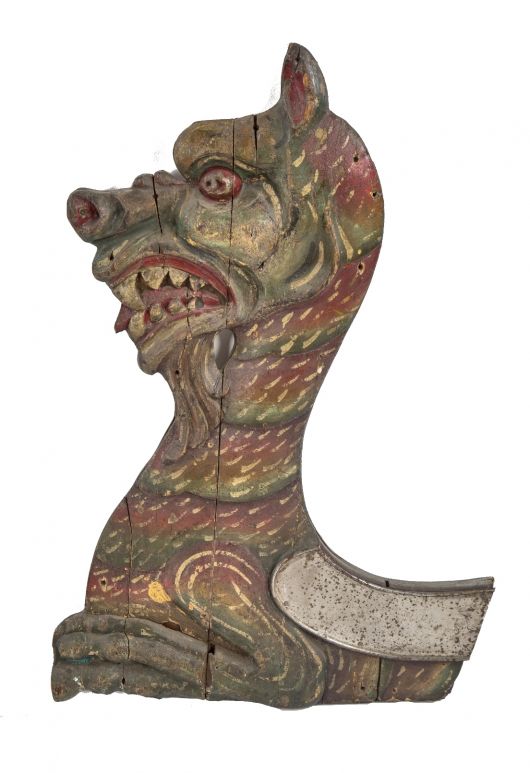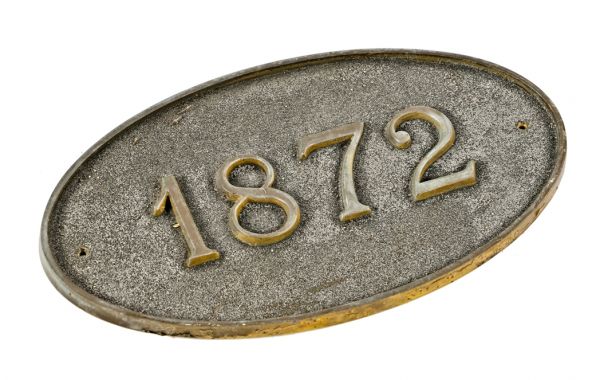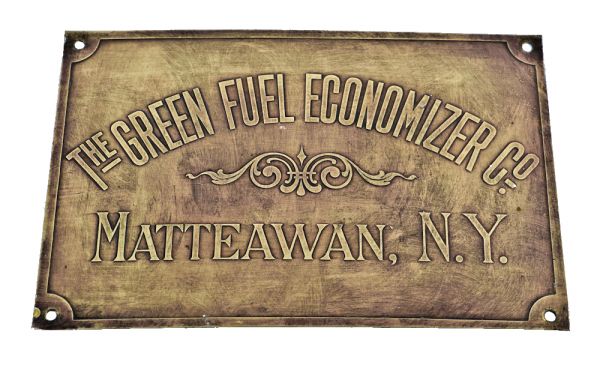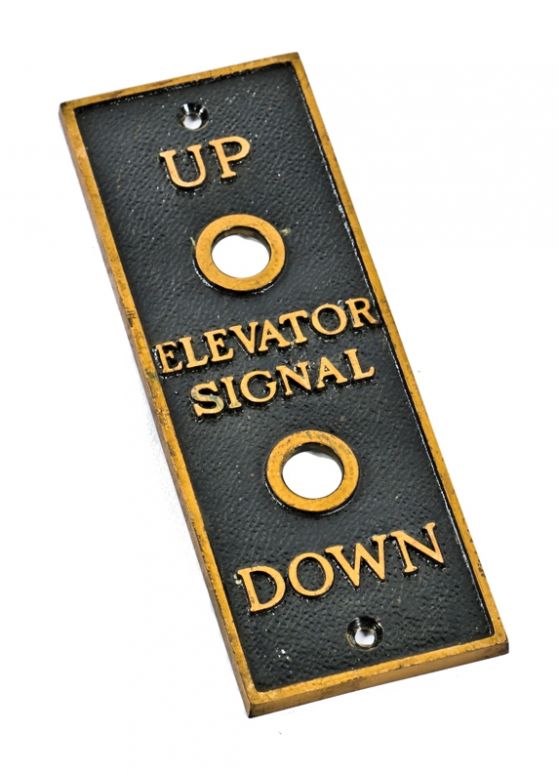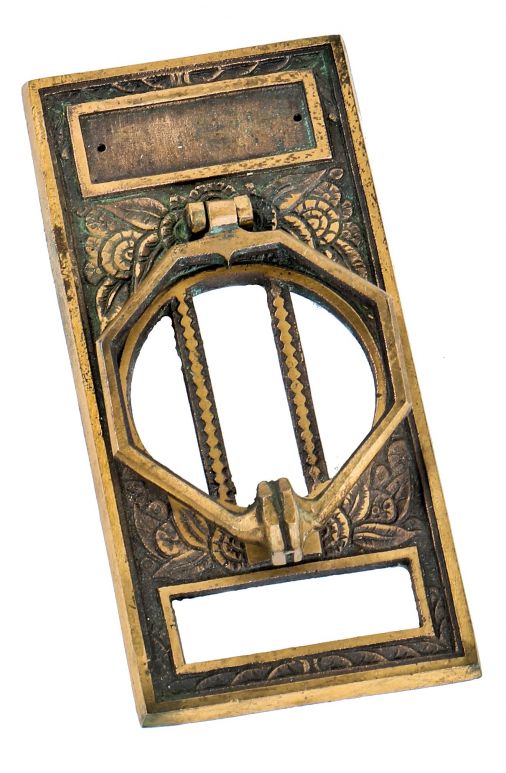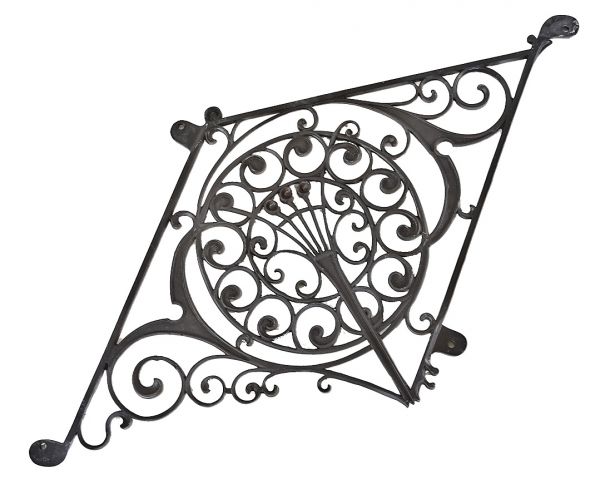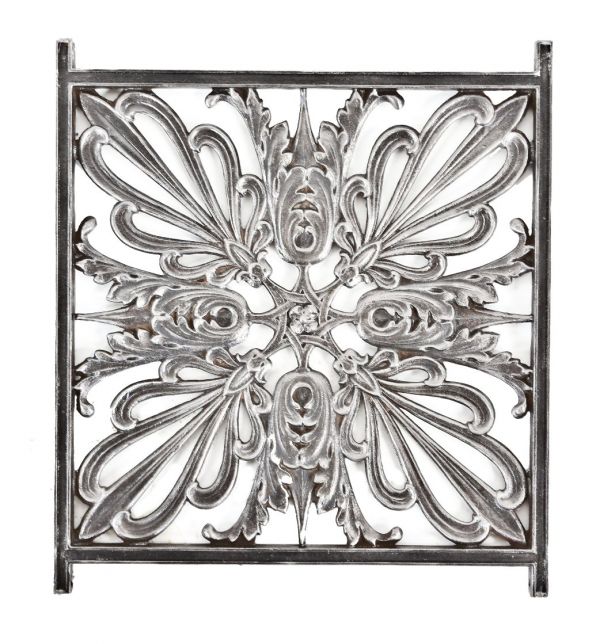important late 19th or early 20th century edward kemeys-designed winslow brothers signed cast bronze plaque depicting a cheyenne warrior in deep relief
SOLD
Out of stock
SKU
UR-29015-18
winslow brothers foundry, chicago, ills.
hard to find and highly sought after all original and finely executed late 19th or early 20th century edward kemeys-designed cast bronze single-sided plaque depicting "left hand," a cheyenne warrior executed by the notable chicago foundry winslow brothers. the plaque was modeled in clay (by kemeys) based on sketches or portraits from the western frontier. winslow brothers fabricated a number of these plaques for a series called "the american west in bronze." edward kemeys was a notable american sculptor, considered america's first "animalier." kemeys is perhaps best known for his sculptures of animals, particularly the two bronze lions that flank the entrance to the art institute of chicago building kemeys first began his career in working with iron in new york city at age seventeen. he studied in new york city and then paris. while in paris he was inspired by the style of antoine-louis barye. he made a specialty of the wild animals of the american continent. his “fight between buffalo and wolves” attracted much attention at the paris salon in 1878. among his other important works are “panther and deer,” and “coyote and raven.” a colossal head of a buffalo for the facade of the station of the pacific railroad at st. louis, missouri, which was cast in bronze in new york in august, 1887, was the largest work of its kind that had been done in the united states. another bronze statue of a panther named "still hunt," is permanently situated on a rock flanking the east drive of new york city's central park. the winslow brothers foundry (specializing in ornamental iron and bronze work) was founded around 1887 by brothers william and francis winslow. within a very short time thereafter, the winslow brothers would become one of the most accomplished foundries; outfitting numerous notable buildings and residences with skillfully executed metal ornament well into the 20th century. as early as 1881 william winslow was involved in foundry work when he joined the prestigious helca iron works of new york as office man and later as partner in 1883. helca would later receive the commission to supply any and all ornamental ironwork (under winslow's supervision) for burnham and root's rookery building in chicago. interestingly, the winslow brothers would later install elevator systems in the rookery when they briefly ventured into elevator manufacturing. in 1885 winslow moved to chicago and joined e.t. harris to form the firm of harris and winslow, manufacturers of ornamental iron and bronze. after harris retired, winslow and his brother francis established the winslow brothers company, which was first listed in a chicago directory in 1887, at 99-109 west monroe street, with william as president and francis as secretary and treasurer. the winslow firm was represented at numerous international exhibitions, such as the world's columbian exposition of 1893, where they were awarded eight metals. in 1900, they were awarded the grand prix, two gold medals and three honorable mentions at the exposition universelle in paris, france. the firm's rapid growth led to the establishment of offices or selling agencies in new york baltimore, pittsburgh, new orleans, minneapolis, los angeles kansas city, and san francisco. according to several heavily illustrated catalogs for the winslow brothers, their foundry produced some of the finest bronze and ironwork for several building commissions across the country. their work included stair balusters, signage, elevator grilles, exterior storefront ornament, lighting fixtures and other metal ornament used within the interiors and exteriors of commercial buildings and residences.
in 1905 winslow brothers constructed a new manufacturing plant consisting of six buildings, one and two storied, covering 175,00 square feet of floor space. it was built on the tract of land bounded by forty-sixth and forty-seventh avenues and van buren and harrison streets, and cost $150,00-200,00 to build. raeder & coffin were the architects on record. winslow brothers continued to thrive in the fabrication of customized architectural metalwork throughout the country well into the early 20th century. world war i dramatically changed both their operation and output, where nearly all of their divisions within the newly built plant were now focused on a "patriotic campaign" in the form of a seemingly endless fabrication of artillery shells. a catalog and/or special booklet from 1919 (author's collection) is completely devoted to operations surrounding the war effort, with absolutely no mention of their former life as a highly specialized ornamental metal foundry. in fact, the cover of the catalog contains a single graphic, in the form of a lightly embossed metallic gold shell casing and nothing more. when the war drew to a close, the winslow brothers gradually shut down any and all remaining operations. the pressure of maintaining day-to-day operations, coupled by labor unrest were some of the factors leading to their decision to close down the plant. the drawn out shut down and selling of the company's assets occurred between 1919 through the early 1920's.
You Might Also Like
WORDLWIDE SHIPPING
If required, please contact an Urban Remains sales associate.
NEW PRODUCTS DAILY
Check back daily as we are constantly adding new products.
PREMIUM SUPPORT
We're here to help answer any question. Contact us anytime!
SALES & PROMOTIONS
Join our newsletter to get the latest information


